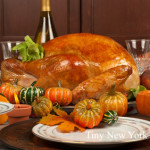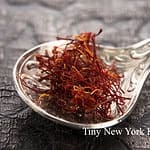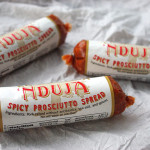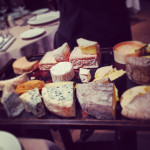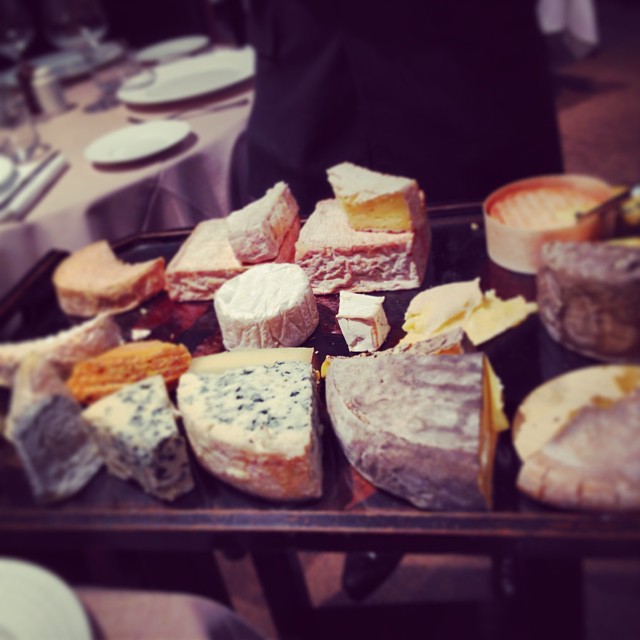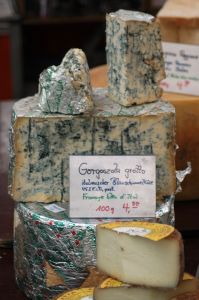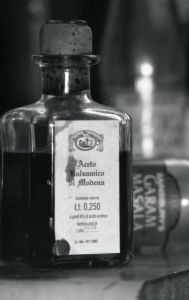The turkey came originally from America and was first domesticated by the Aztecs in Mexico. The Spanish introduced turkeys into Europe and they soon became a popular choice in France, Italy and Britain.
When early settlers from Britain, France and Holland crossed the Atlantic to North America, the vast flocks of turkey that roamed wild provided them with sustenance. They were plentiful and so easy to trap or shoot that the older children of the family were given the responsibility of catching them. The Native Americans meanwhile taught the new settlers the rudiments of farming, and in November 1621, on the first anniversary of their arrival, the Pilgrims entertained the locals to a feast, at the center of which was the turkey. Ever since, this has been the traditional bird served at Thanksgiving.
Turkeys are available fresh, chilled, or frozen all year round. When buying a whole bird, look for a plump well-rounded breast and legs and clear, soft and evenly colored skin. Avoid birds that are bruised, with blemishes or torn skin or any that have been badly or unevenly plucked. Turkeys vary enormously in weight.
When you’re ready to purchase your turkey it’s easy to get confused on what size to get. A good guild to go by is to figure approximately 1 1/4 pounds per person. This makes enough for the meal and provides a decent amount of leftovers.
To store your turkey place it in a large, deep dish and cover it completely with plastic wrap. Store it in the coolest part of the refrigerator; making sure that it does not come in contact with other foods.
Thaw a frozen turkey in the refrigerator for 2 to 4 days. Estimate 24 hours for every 5 pounds, so 2 days for a 10 pounder, 3 days for a 15 pounder, etc.
And then there is always the frozen turkey emergency that goes like this, “Help, help, it’s Wednesday, and my turkey is still frozen!!!” It’s been a long time, but I’ve been in this predicament. What you do is leave the turkey in its wrapper and put it in a large-size container. A lobster pot works well. Fill the container with cold tap water and let it sit for 30 minutes. Dump out the water and refill. Let it sit another 30 minutes. Repeat until the turkey is thawed, then roast immediately or transfer to the refrigerator.
The good news is that you can brine or dry cure your turkey while it defrosts in the refrigerator. What a Godsend that is! Use a lighter brine solution, which is about 1/2 cup kosher salt per gallon of water, plus sugar and spices). If you’re dry curing, use the standard recipe. You’re turkey should stay below 40 degrees while brining. You don’t need to brine or cure a kosher or butterball type supermarket frozen turkey. These come pre-brined. If you want to be able to put your own flavor stamp on your meal, then get a natural or untreated bird and do it yourself. If you plan on brining for 2 days use the weaker solution that I just mentioned. If you plan to brine for 24 hours or less, then bump it up to 1 cup kosher salt per gallon of water. Then add an equal amount of sugar. I don’t always brine, but when I do I’ve been known to throw an assortment of flavorings in the brine. Flavorings that you could add to your brine could be: apples, lemons, oranges, onions, garlic, shallots, peppercorns, bay leaves, cinnamon sticks, cloves, allspice berries, juniper berries, mustard seeds, fennel seeds, coriander seeds, rosemary, sage, thyme, savory, parsley, or oregano. You can also replace half the water with sweet cider, hard cider, vegetable stock, turkey stock, chicken stock, beer, white wine, or red wine. If you want to dry cure then use about 1/2 teaspoon kosher salt for every pound of turkey. Then add spices to your taste.
Stuffing your turkey is a personal preference. I always stuff the bird because I love how it tastes when cooked inside the turkey. It does slow down the cooking process, however. Never stuff the turkey in advance of cooking. The stuffing can be made in advance, but the turkey should not be stuffed until just before it is placed in the oven. Weigh the stuffing and add this to the weight of the bird before calculating the cooking time. Thoroughly rinse the body cavity of the bird under cold running water, and then drain it well. Wipe the turkey, inside and out, with paper towels. Press the stuffing inside the shallow neck cavity. Make sure not to pack it in too tightly. Turn the bird over and pull the neck skin over the stuffing. Now it’s time for a little turkey bondage and truss the bird (tuck the wing tips under the breast and tie the legs together) and then cook for the calculated time. Never shorten the cooking time because although the meat may appear cooked, extra time must be allowed for cooking the stuffing thoroughly.
If you choose not to stuff your turkey then place aromatics in the body cavity of the bird. Cut a large onion in half and stud each half with 4 to 6 cloves. Place this in the body cavity of the bird. Cut an orange and a lemon into quarters and add these, together with 3 or 4 bay leaves, 4 to 6 fresh sage sprigs, and 2 to 3 fresh thyme sprigs. Add 1 cinnamon stick or 1 blade of mace for a festive hint of warm spice.
Turkeys are super easy to roast, but require a little more attention than smaller birds. Check to make sure the oven shelves are in the correct position before heating the oven. Preheat the oven to 350 degrees. Place the prepared bird on a rack in a large-size roasting pan. Smear the turkey breast generously with butter, season with salt & pepper and place in the oven. Baste the turkey from time to time during cooking. When the breast has browned, cover with foil to protect it and continue cooking. Remove the covering foil for the final 20 minutes of cooking. To check if the meat is cooked, insert a skewer into the thickest part of the thigh. If the juices run clear and the meat is white, it is cooked. If the juices are pink and the meat is soft and pink, the turkey is not ready. Return it to the oven and check again after 20 minutes. Cooking times will differ depending on whether your bird was purchased fresh or frozen. Plan on 20 minutes per pound in a 350 degree oven for a defrosted turkey and 10 to 15 minutes per pound for fresh. Remember to add more time if you’re turkey is stuffed. You should have an instant-read thermometer in your kitchen drawer. Insert the thermometer into the breast (all the way to the bone) and if it reads 160 degrees you’re good to go. You may also measure the thigh by inserting the thermometer into the thickest part, but not touching the bone, and it should read 165 degrees.
Remove the turkey from the oven and cover it closely with foil. Leave it to rest for at least 30 minutes. This will even out the temperature and make it easier to carve. I know some chefs who let it rest for 2 hours, but I don’t think that one needs to wait that long. If you wish to make gravy in the roasting pan, transfer the bird to a carving plate.
When you’ve let your bird rest awhile remove the trussing string. Hold the bird steady in position with a carving fork. Cut off the legs, then cut these in half or carve the meat from the bones. Make a horizontal cut across the breast above the wing. Carve neat and even vertical slices off the breast. Repeat on the other side of the bird. Arrange slices on a warmed platter. Add the turkey legs or sliced meat to the platter or set them aside for serving separately. Scoop out the stuffing and serve with the meat.
“Work With What You Got!”
© Victoria Hart Glavin Tiny New York Kitchen © 2016 All Rights Reserved
Saffron
Highly prized as a dye, medication and culinary spice since Greek and Roman times, saffron is the stigma of a type of crocus, Crocus sativus, which was once grown all over Europe, including in England. It has a distinctive and lasting aroma, and a pleasant pungency if used sparingly. Because of its striking color, as well as its distinctive flavor, saffron is frequently added to celebration dishes; for example, pilaus from India, Spanish paella and Italian risotto Milanese. Bouillabaisse, the famous French fish and shellfish soup-stew, is flavored with saffron. The spice is also widely used in sweet recipes, including milky rice and sweet custard-like desserts. Baked goods flavored with saffron include breads and cakes.
Saffron threads can be infused (steeped) in a little warm water or milk until the color of the liquid is even. Add the liquid and the threads to the dish, usually towards the end of the cooking process. Saffron powder can be added to food without soaking, but not to hot oil.
“Work With What You Got!”
© Victoria Hart Glavin Tiny New York Kitchen © 2016 All Rights Reserved
Red Split Lentils
The lentil is one of our oldest foods and a staple in many countries around the world. It originated in Asia and North Africa, and continues to be cultivated in those regions, as well as in France and Italy. Lentils are hard even when fresh, so they are always sold dried.
Lentils are a good source of complex carbohydrates and plant protein. They also contain a range of vitamins and essential minerals, including iron, selenium, folate, manganese, zinc, phosphorus and some B vitamins.
Orange-colored red split lentils, sometimes known as Egyptian lentils, are the most familiar variety. They cook relatively quickly, in just 20 to 30 minutes, eventually disintegrating into a wonderful thick, rich purée. They are ideal for thickening soups and casseroles. When cooked with spices, garlic, and onions they make a hot and delicious dhal, a richly flavored purée served as an accompaniment to meat or vegetable curries. In the Middle East, red or yellow lentils are cooked and mixed with spices and vegetables to form balls known as kofte, which are then fried.
“Work With What You Got!”
© Victoria Hart Glavin Tiny New York Kitchen © 2016 All Rights Reserved
Spreadable sausage from Norwalk, Iowa? The culinary creativity across the country never ceases to amaze me. Nduja is a spreadable sausage that comes from Calabria in southern Italy. My husband is Calabrian so it goes without saying that I love all things from Calabria. La Quercia, the cured meat producer in Iowa has introduced its American-made version, which is a mix of prosciutto, speck, and red chili peppers. It comes in five ounce links and is extremely versatile. Use it in pasta sauce, grilled cheese, BLTs, egg salad, burgers, pizza, crostini, or tacos. It’s also wonderful slathered on warm bread or crackers.
If you’re in New York City you may find it at Fairway, Amish Market, or Murray’s Cheese. If you’re in other parts of the country then go to La Quercia’s website for store locations. http://laquercia.us
“Work With What You Got!”
© Victoria Hart Glavin Tiny New York Kitchen
Cheeses of Italy
While in Rome last week I had a cheese course after dinner nearly every night. Like in France (where I had the cheese course after dinner the week before) the waiter brought out beautiful trays of cheeses. Some of the cheeses were mild and some were rather stinky, but all were delicious. Here is a bit about some of the various cheeses of Italy.
Asiago: Named for the plateau at the foot of the Dolomites to the north of Vicenza in the Vento region, is a pale cow’s milk cheese with a slightly sweet taste; aged and hardened it can be grated. It is made in several versions, from a hard, half-fat cheese to a soft, full-fat version.
Britto: From the Sondrio province of Lombardia (the Valtellina) is made of cow’s milk and ten percent goat’s milk.
Caciocavallo: Comes from Southern Italy, where it is stretched and shaped by hand, like mozzarella and provolone. Made with cow’s milk, caciocavallo when it is young has a firm, smooth texture and a mildly salty flavor that grows more pungent as it is aged. It is often made into a gourd shape, and smoked versions are available.
Fior di Latte: Is a soft, fresh cheese from cow’s milk, which literally means, “flower of milk.”
Fontina: Is an unpasteurized cow’s milk cheese, the most authentic and delicious examples of which come from the slopes of the Valle d’Aosta. With its delicate, buttery, nutty flavor, fontina is a favorite for cooking, as it melts beautifully.
Gorgonzola: Is Italy’s most famous blue cheese. It was born in Lombardia, but almost all of it today is produced in Piemonte. Made of cow’s milk, most Gorgonzolas are aged from three to six months. The mildest, sweetest versions (aged for the minimum) are called Gorgonzola dolce; the most pungent, Gorgonzola picante.
Grana: Is a general term for a hard, grainy-textured cheese often used for grating. The original recipes here often called simply for grana, the expectation being that one would use the grana of that recipe’s region. Since these local grana cheeses are not widely available outside Italy.
Montasio: Is a firm cow’s milk cheese similar to Asiago, available aged or fresh. It comes from Friuli-Venezia Giulia.
Mozzarella: Is one of the most famous and widely available cheeses in Italy, though southern versions are considered the best. Mozzarella di bufala is made from buffalo milk rather than cow’s milk, as is most common today. Buffalo milk is creamier than cow’s and imparts a more velvety texture and tangier fragrance.
Parmigiano-Reggiano: Is a hard cheese made from partly skimmed cow’s milk by a centuries-old method in the provinces of Parma, Reggio Emilia, Modena, and Bologna in Emilia-Romagna and Mantova in Lombardia.
Pecorino: Refers to any Italian sheep’s milk cheese (pecora is Italian for “sheep”); of the dozens of varieties of pecorino cheeses, the most famous version is pecorino Romano, which has a sharp and pungent flavor that makes it mainly appropriate for cooking or for grating like Parmigiano-Reggiano. Pecorino dolce is a young and fresh pecorino with a notable sweetness and softer texture.
Provolone: Is a sharp and tangy, firm-textured cow’s milk cheese that originated in the Basilicata region of southern Italy; like gorgonzola, it has lighter-flavored versions referred to as dolce, and stronger-flavored, aged versions referred to as picante. Both versions can also be smoked and are good for cooking.
Ricotta: In Italian means, “Re-cooked,” and refers to a soft, milk creamy-white cheese traditionally made from the whey remaining after making pecorino. Today, most ricotta is made from cow’s milk. It has a very mild, lightly tart flavor and slightly grainy texture. It is also often used in desserts and baking. Ricotta salata refers to ricotta to which salt has been added as a preservative, making it less moist and a preservative, making it less moist and more pungent in flavor than fresh ricotta. Robiola is a goat’s milk cheese that often contains cow’s and sheep’s milk. It has a creamy texture and is not aged beyond three weeks.
Scamorza: From Abruzzo and Molise, is a pasta filate (“pulled or spun dough”) cheese that is shaped by hand, like provolone or mozzarella. A cow’s milk cheese with a mild, creamy flavor similar to mozzarella, it is sometimes smoked.
Taleggio: Is made in the Taleggio Valley north of Bergamo as well as in other centers in Lombardia and in Treviso in the Veneto. Made in square forms, it is a semisoft cow’s milk cheese with a delicate creamy taste but a pungent aroma.
Toma: Toma is also known as tuma and can mean different kinds of cheeses. The first is a smooth, firm, cow’s milk cheese from Lombardia and Piemonte, traditionally aged between three and eighteen months. In Sicilia, toma refers to fresh ewe’s milk curds molded in a basket. In the north, tuma refers to an unsalted goat’s milk cheese.
In Italy, true balsamic vinegar is not considered an acidic ingredient for salad dressings, but rather a condiment to sprinkle on grilled meats or the best strawberries of the season. There are three very different kinds available: aceto balsamico tradizionale, commercial, and condiment.
Aceto balsamico tradizionale, or “traditional balsamic vinegar,” is made in small quantities under rigorously controlled conditions in and around the towns of Modena and Reggio Emilia in Emilia-Romagna. This artisanal product is protected by Italian law and by the European Union’s designation of original standards. Created from the boiled-down juice of sweet white grapes (traditionally Trebbiano), it has an underlying sweetness and takes on additional complex flavors from sequential aging in chestnut, oak, and other wood barrels. The long aging further evaporates the liquid, giving it a slightly viscous body. The name comes from balsanum, Latin for an aromatic resin that soothes and relaxes (the English balm is from the same word), indicating that the condiment was originally considered healthful and even used as medicine. Tradizionale must age for 12 year, so it is always expensive, but worth every penny.
Mass-market commercial balsamic vinegar, which is made from artificially flavored red wine and is not aged, is sometimes labeled “balsamic vinegar of Modena.” To improve its flavor and body, add a large pinch of brown sugar for every cup of vinegar.
Condimento balsamic vinegar is often good, and can be a fine alternative to commercial balsamic of questionable quality and the excellent but expensive tradizionale. It is usually made in Modena or Reggio Emilia, and often follows many of the same traditional manufacturing methods as its pricey relative. But unlike aceto balsamico tradizionale, condiment is not protected by a determined set of standards, so big differences can exist among brands. When you find one you like, stick with it.
Many chefs use a drizzle of boiled-down balsamic vinegar to decorate plates and act as an additional flavoring element. To make this useful garnish, boil 1 cup commercial balsamic vinegar in a nonreactive saucepan over a high heat until it has reduced by about three-fourths and is thickened and syrupy. It will keep indefinitely stored in a tightly closed jar at room temperature.
The Feast of Corpus Christi (The Most Holy Body & Blood of Christ) goes back to the early 1200s in medieval Europe. However, in 1264, Pope Urban IV decided to extend the Feast of Corpus Christi to the universal Church. He wanted to strengthen faith in and devotion to the Eucharist at the time when a number of evangelical movements in France and Italy were embracing ideas and attitudes that were inconsistent with the faith of the Catholic Church. Some denied the Eucharist was sacrament. In reaction, popular movements of intense devotion to the Eucharist sprang up in northern Europe. The focus on the devotions was the host itself. It became customary to reserve the host in the tabernacle, as is still done today, and to expose it in the monstrance on the alter. The practice of ringing bells at the time of the elevation of the host so that everyone in church would look at it was also begun during this period.
There is another reason that Pope Urban IV decided to make Corpus Christi a universal feast day. An event took place in Italy that excited the local population. In the small Italian town of Bolsena, located in Umbria, a German priest who was on a pilgrimage celebrated Mass in the Church of Santa Christina. The unusual thing that happened during the celebration of Mass was that the German priest it seemed had experienced some serious doubts about the transubstantiation of the bread and wine during the Mass. He had begun to doubt that they became the Body and Blood of Jesus Christ.
During the Mass, after the consecration, his doubts disappeared. He saw blood issuing from the host and staining the alter cloth. Reports of the miracle quickly spread throughout the village of Bolsena. A procession was formed which brought the bloodstained cloth to Pope Urban IV who was in Orvieto at the time. It was only after seeing the bloody cloth that the Pope decided to make Corpus Christi a feast for the Church throughout the world. About 750 years later Catholics still celebrate the feast given birth by the revitalized faith of a German priest and the good people of a small Italian village.

